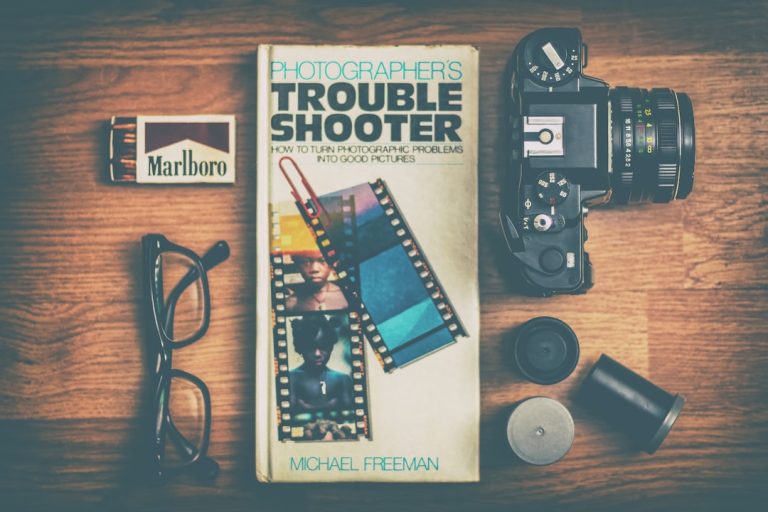
“The Cat in the Hat,” a beloved children’s book written by Dr. Seuss, first graced the shelves in 1957 and has since become a cornerstone of early childhood literature. The story revolves around a mischievous feline who arrives at the home of two children, Sally and her brother, on a rainy day, bringing chaos and excitement into their otherwise dull afternoon.
With its whimsical rhymes and playful illustrations, the book captures the imagination of young readers while also imparting valuable lessons about responsibility and the consequences of one’s actions. Dr. Seuss, whose real name was Theodor Seuss Geisel, crafted this narrative not only to entertain but also to engage children in reading, making it a pivotal work in the realm of educational literature.
The narrative structure of “The Cat in the Hat” is deceptively simple yet profoundly effective. The story unfolds with the arrival of the Cat, who introduces a series of increasingly wild antics that challenge the children’s sense of order and propriety. Accompanied by the chaotic Thing 1 and Thing 2, the Cat’s escapades escalate, leading to a whirlwind of mess and mayhem.
However, as the story progresses, it becomes clear that the Cat’s fun comes with a price, prompting readers to reflect on themes of chaos versus order and the importance of accountability. This duality not only entertains but also encourages young readers to think critically about their own behavior and choices, making “The Cat in the Hat” a multifaceted work that resonates on various levels.
Key Takeaways
- The Cat in the Hat, written by Dr. Seuss, is a beloved children’s book that has been a staple in many households since its publication in 1957.
- The book’s impact on children’s literature is significant, as it revolutionized the way children’s books were written and illustrated, making them more engaging and entertaining for young readers.
- The enduring popularity of The Cat in the Hat can be attributed to its timeless themes, memorable characters, and engaging storytelling, which continue to resonate with children and adults alike.
- Dr. Seuss’s legacy and the lasting impact of The Cat in the Hat can be seen in the continued success of his books, as well as the numerous adaptations and merchandise that have been created over the years.
- The Cat in the Hat’s influence on education and literacy is undeniable, as it has been used in classrooms to teach children how to read and has sparked a love of reading in countless young readers.
The Impact of The Cat in the Hat on Children’s Literature
“The Cat in the Hat” revolutionized children’s literature by introducing a new style of storytelling that combined playful language with engaging illustrations. Prior to its publication, many children’s books were didactic in nature, often prioritizing moral lessons over entertainment. Dr. Seuss broke this mold by creating a narrative that was both fun and educational, using a limited vocabulary that was accessible to early readers. This innovative approach not only captivated children but also encouraged reluctant readers to engage with books, fostering a love for reading that would last a lifetime. The book’s rhythmic text and imaginative illustrations set a new standard for children’s literature, paving the way for future authors to explore similar themes of whimsy and adventure. Moreover, “The Cat in the Hat” played a significant role in shaping early literacy programs. Its success prompted educators and publishers to recognize the importance of engaging narratives in teaching children how to read. The book became a staple in classrooms across America, often used as a tool for phonics instruction and vocabulary development. By demonstrating that reading could be enjoyable rather than a chore, Dr. Seuss inspired a generation of children to embrace literature. The impact of “The Cat in the Hat” extended beyond its pages; it ignited a movement toward creating more engaging and visually stimulating books for young readers, ultimately transforming the landscape of children’s literature.
The Enduring Popularity of The Cat in the Hat

Decades after its initial release, “The Cat in the Hat” continues to capture the hearts of children and adults alike. Its timeless themes of curiosity, adventure, and mischief resonate across generations, making it a perennial favorite among families and educators. The book’s unique blend of humor and chaos appeals to young readers’ imaginations while also providing relatable scenarios that reflect their own experiences with rules and boundaries.
This universal appeal ensures that “The Cat in the Hat” remains relevant in an ever-changing cultural landscape, as new generations discover its charm and whimsy. Additionally, the book’s popularity is bolstered by its adaptability across various media formats. From animated television specials to theatrical productions, “The Cat in the Hat” has transcended its original form to reach audiences worldwide.
These adaptations not only introduce the story to new fans but also reinforce its core messages in engaging ways. The character of the Cat has become an iconic figure in popular culture, symbolizing creativity and playfulness while encouraging children to embrace their imaginations. This enduring presence in various forms of media contributes to the book’s lasting legacy and ensures that it will continue to be cherished for years to come.
Dr. Seuss’s legacy is intricately tied to “The Cat in the Hat,” as it represents both his innovative spirit and his commitment to children’s literacy. As one of the most influential authors in children’s literature, Dr.
Seuss created a unique style characterized by imaginative characters, playful language, and vibrant illustrations. His ability to weave complex themes into simple narratives has left an indelible mark on literature for young readers. “The Cat in the Hat” serves as a prime example of his genius, showcasing his talent for making learning enjoyable while addressing important life lessons.
Furthermore, Dr. Seuss’s impact extends beyond his own works; he inspired countless authors and illustrators who followed in his footsteps. His emphasis on creativity and imagination has encouraged new generations of writers to explore unconventional storytelling methods and engage young readers through humor and whimsy.
The legacy of “The Cat in the Hat” is evident in contemporary children’s literature, where many authors strive to replicate its magic by crafting stories that are both entertaining and educational. Dr. Seuss’s influence is felt not only through his own books but also through the broader movement he inspired within children’s literature.
The Cat in the Hat’s Influence on Education and Literacy
| Metrics | Data |
|---|---|
| Number of Copies Sold | 16 million |
| Impact on Early Literacy | Significant, as it introduces children to reading |
| Use in Education | Commonly used in elementary school curriculums |
| Translations | Available in over 20 languages |
“The Cat in the Hat” has had a profound influence on education and literacy initiatives since its publication. Its engaging narrative structure and playful language have made it an essential tool for teaching reading skills to young children. Educators have long recognized that children learn best when they are engaged and entertained, and Dr.
Seuss’s work exemplifies this principle perfectly. By incorporating “The Cat in the Hat” into their curricula, teachers can foster a love for reading while simultaneously developing essential literacy skills such as phonemic awareness, vocabulary acquisition, and comprehension. Moreover, “The Cat in the Hat” has inspired numerous educational programs aimed at promoting literacy among children from diverse backgrounds.
Organizations dedicated to improving literacy rates have utilized this classic text as part of their outreach efforts, recognizing its ability to captivate young audiences. By introducing children to engaging stories like “The Cat in the Hat,” these programs aim to instill a lifelong passion for reading that transcends socioeconomic barriers. The book’s role as an educational tool underscores its significance not only as a work of art but also as a catalyst for positive change within communities.
The Cat in the Hat and its Adaptations
Bringing the Story to Life on Screen
Animated television specials have brought the story to life for new audiences, allowing children to experience the whimsical adventures of the Cat through vibrant visuals and catchy songs. These adaptations have played a crucial role in keeping the story relevant and accessible, ensuring that even those who may not pick up a book can still enjoy its charm.
Taking the Stage by Storm
In addition to animated adaptations, “The Cat in the Hat” has also made its mark on stage with theatrical productions that capture the essence of Dr. Seuss’s storytelling style. These live performances offer an interactive experience for audiences, allowing them to engage with the characters and themes in dynamic ways.
A Timeless Story for All Ages
Such adaptations not only celebrate the original narrative but also introduce it to new generations who may find joy in experiencing it through different mediums. The continued success of these adaptations highlights the versatility of “The Cat in the Hat” as a story that can transcend time and format while maintaining its core message.
Controversies Surrounding The Cat in the Hat

Despite its widespread acclaim, “The Cat in the Hat” has not been without controversy over the years. Some critics have raised concerns about the portrayal of authority figures within the story, particularly regarding how children respond to chaos and disobedience. The character of the Cat embodies mischief and rebellion against societal norms, which some argue could send mixed messages about respecting rules and authority figures.
This debate has sparked discussions among parents, educators, and literary critics about how children’s literature should balance entertainment with moral instruction. Additionally, there have been discussions surrounding cultural sensitivity within Dr. Seuss’s body of work, including “The Cat in the Hat.” As society evolves and becomes more aware of issues related to representation and inclusivity, some elements within Seuss’s stories have come under scrutiny for perpetuating stereotypes or failing to reflect diverse experiences accurately.
These conversations highlight the importance of examining classic texts through contemporary lenses while recognizing their historical context. While “The Cat in the Hat” remains a cherished classic for many, these controversies serve as reminders that literature must continually evolve alongside societal values.
The Timeless Appeal of The Cat in the Hat
In conclusion, “The Cat in the Hat” stands as a testament to Dr. Seuss’s genius and his ability to create stories that resonate across generations. Its whimsical narrative, engaging characters, and playful language have made it an enduring favorite among children and adults alike.
The book’s impact on children’s literature is profound; it has transformed how stories are told for young readers while fostering a love for reading that continues to thrive today. As families gather around this classic tale time after time, they are reminded not only of its entertainment value but also of its underlying messages about responsibility and creativity. Ultimately, “The Cat in the Hat” embodies timeless themes that transcend age and cultural boundaries, ensuring its place as a beloved classic for years to come.
Its adaptability across various media formats further solidifies its relevance in contemporary society while introducing new audiences to Dr. Seuss’s imaginative world. As we reflect on its legacy, it becomes clear that “The Cat in the Hat” is more than just a children’s book; it is an enduring symbol of creativity, curiosity, and joy that will continue to inspire generations of readers long into the future.
FAQs
What is “The Cat in the Hat” about?
“The Cat in the Hat” is a children’s book written by Dr. Seuss. It tells the story of a mischievous cat who visits two children, Sally and her brother, while their mother is away. The cat’s antics lead to chaos and mayhem in the house, but he ultimately helps clean up the mess before their mother returns.
When was “The Cat in the Hat” first published?
“The Cat in the Hat” was first published in 1957.
Who is the author of “The Cat in the Hat”?
“The Cat in the Hat” was written by Theodor Geisel, who is better known by his pen name, Dr. Seuss.
What age group is “The Cat in the Hat” intended for?
“The Cat in the Hat” is intended for young children, typically preschool and early elementary school age.
Has “The Cat in the Hat” been adapted into other forms of media?
Yes, “The Cat in the Hat” has been adapted into a 2003 live-action film starring Mike Myers, as well as an animated television series.






